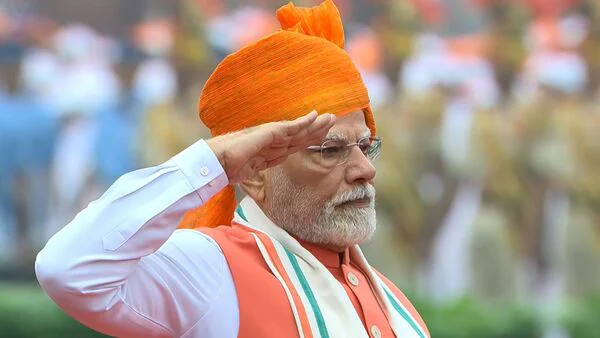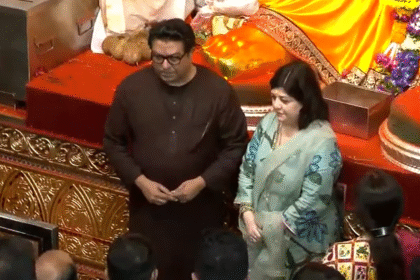GST Reforms: What May Get Cheaper After Narendra Modi’s Next Generation Goods and Services Tax in India
Historical Context, and Evolution of GST
The Goods and Services Tax (GST) in India has been one of the most transformative reforms in the country’s economic history. Introduced in July 2017, GST replaced a complicated structure of multiple indirect taxes that were levied at different stages of production and distribution. Before its introduction, India’s taxation system was fragmented—value-added tax (VAT), excise duty, service tax, octroi, entry tax, and several state-level levies coexisted, often creating inefficiencies and increasing the cost burden on consumers.
The primary idea behind GST was to unify India’s market into a single taxation framework, ensuring that goods and services were taxed only once, thus reducing the cascading effect of multiple taxes. While the rollout of GST was not without challenges, over time it has brought a degree of transparency, simplified compliance, and boosted revenue collection. However, several criticisms remained—particularly regarding the complexity of tax slabs, high rates on essential goods, and administrative loopholes that burdened small and medium enterprises.
Now, nearly eight years since its implementation, Prime Minister Narendra Modi has signaled a next-generation GST reform, which aims to rationalize tax slabs, simplify compliance further, and potentially make several goods and services cheaper for the common man. This reform is expected to align GST more closely with global practices while addressing the long-standing demands of industry bodies, taxpayers, and policy experts.
The Economic Significance of GST
GST is not just a tax—it is a reflection of how the government shapes consumption, production, and economic priorities. For instance, luxury goods and items considered socially undesirable, such as tobacco and alcohol, are taxed at higher rates, while essential goods are often placed in the lowest tax slabs or exempted altogether. This dual objective of revenue generation and social balancing has been a key principle behind GST’s design.
With the upcoming reforms, the government is likely to streamline the number of tax slabs. Currently, India has multiple GST slabs—0%, 5%, 12%, 18%, and 28%, along with additional cess on items such as luxury cars and sin goods. This has often led to confusion and disputes over classification. Experts believe that merging these into fewer slabs—possibly a three-tier system—could not only reduce complexity but also lower prices for many consumer goods.
Why GST Reforms Are Needed Now
The timing of Modi’s next-generation GST reform is not accidental. India is at a crucial economic juncture, with a growing middle class, rapid digital adoption, and ambitious plans to become a $5 trillion economy. Simplifying GST is expected to encourage consumption, attract foreign investment, and increase compliance, especially from small traders and businesses who often struggle with technicalities.
Moreover, with global inflationary pressures, the government is under social and political pressure to make essential goods affordable. A rationalized GST structure can ensure that everyday items such as food products, medicines, household goods, and consumer durables become cheaper, directly benefiting millions of households.
What May Get Cheaper – Early Signals
While the final blueprint of the reform is yet to be revealed, experts and policymakers have hinted at some categories that could see tax cuts:
- Essential Food Products – Items such as packaged food, edible oils, dairy products, and beverages may move to lower slabs.
- Consumer Durables – Goods like refrigerators, washing machines, and air conditioners, which are currently taxed at higher slabs, may see reduced rates to boost demand.
- Automobiles and EVs – Electric vehicles, in particular, could benefit from lower GST to encourage adoption in line with India’s green mobility push.
- Healthcare and Medicines – Life-saving drugs and medical equipment are expected to become more affordable.
- Digital Goods and Services – With India’s digital economy expanding, rationalized tax rates on gadgets, software, and online services could stimulate growth.
The upcoming GST reform under Narendra Modi is not just about reducing prices—it is about restructuring India’s taxation system to make it more transparent, growth-oriented, and citizen-friendly. By reducing the tax burden on essential goods and improving compliance, the government is expected to strengthen both consumer confidence and industry competitiveness.
The heart of India’s upcoming GST reform lies in slab restructuring. Since its introduction in 2017, GST has operated with five primary slabs (0%, 5%, 12%, 18%, and 28%), along with a special cess on certain luxury and sin goods. While this approach helped balance affordability with revenue generation, over time it has created complications in classification, compliance disputes, and consumer confusion.
Many businesses have argued that too many slabs reduce predictability, discourage investment, and increase litigation. For example, the debate over whether a food product should be taxed at 5% or 12% has often ended up in lengthy legal disputes, undermining GST’s core objective of simplification.
The Push for Fewer Slabs
Policy experts believe that the Modi government’s next-generation GST may consolidate the existing slabs into a more streamlined three-tier system:
- Lower Slab (0%–5%) – Essential goods, food items, medicines, and mass-consumption products.
- Standard Slab (12%–15%) – Most consumer goods and services.
- Higher Slab (18%–20%) – Premium goods, luxury items, and select services.
Luxury and sin goods may continue to attract the 28% rate plus cess, but for everyday consumer categories, fewer slabs would mean less confusion, fairer pricing, and simpler compliance.
Global Comparisons: How India’s GST Stands
Globally, most countries follow a simplified VAT/GST structure. For instance:
- Australia – Operates with a flat 10% GST, with exemptions on essentials like food and healthcare.
- Singapore – Has a 9% GST (effective 2024), with limited exemptions.
- Canada – Uses a 5% federal GST, with provinces adding their own sales tax.
- European Union – Typically operates with two rates: a standard VAT (15–25%) and a reduced rate (5–10%) for essentials.
Compared to these models, India’s five-slab structure appears overly complicated. A restructured three-tier GST would bring India closer to international norms, signaling a matured tax regime ready for global integration.
Implications for Key Sectors
The reform’s sectoral impact will be significant, influencing both businesses and consumers.
Food and FMCG (Fast-Moving Consumer Goods)
Staples like cereals, pulses, and fresh produce are already exempt or taxed minimally. However, packaged food items, dairy products, and beverages may see lower rates under the new GST. This could make products like biscuits, instant noodles, ready-to-eat meals, and soft drinks cheaper—benefiting millions of households.
Healthcare and Pharmaceuticals
One of the biggest expectations from the reform is tax relief on medicines, diagnostic equipment, and hospital services. By placing life-saving drugs in the 0% or 5% slab, the government could significantly ease the financial burden on patients. India, being the “pharmacy of the world,” would also enhance its competitiveness in the global pharmaceutical supply chain.
Consumer Electronics and Appliances
Currently taxed at 18%–28%, appliances like refrigerators, washing machines, and air conditioners are considered semi-luxury goods. A reduction to the 12%–15% slab could stimulate demand, supporting both manufacturers and consumers. This move would also align with the government’s Make in India and Digital India vision.
Automobile Industry
The automobile sector, a crucial pillar of India’s economy, has long demanded rationalized GST. While traditional vehicles may remain in higher slabs due to their environmental impact, electric vehicles (EVs) could see further tax reductions, boosting India’s transition to clean mobility.
Real Estate and Housing
GST on construction materials like cement and steel has long been a contentious issue. If reforms place these in lower slabs, it would directly reduce home construction costs, benefiting both builders and homebuyers. Affordable housing, in particular, may receive special concessions.
Digital Economy and Services
As India rapidly digitizes, services like online education, cloud computing, and fintech solutions may receive rationalized tax treatment. Lower GST could encourage innovation, investment, and wider adoption of technology across the country.
Consumer Sentiment and Political Angle
Beyond the economics, GST reform has a strong political dimension. With state and national elections always influencing policy choices, making essential goods cheaper strengthens the government’s image of being pro-people. At the same time, easing compliance for small traders can expand the BJP’s goodwill among business communities.
Narendra Modi’s narrative of a “next-generation GST” is not just an administrative reform—it is also a political statement. By promising affordability, efficiency, and growth, the government is crafting a tax policy that resonates with both consumers and industry.
GST slab restructuring has the potential to reshape India’s economy at multiple levels. A streamlined structure, aligned with global practices, could simplify taxation, improve compliance, reduce consumer costs, and send a strong signal to investors about India’s economic maturity.
One of the strongest appeals of the upcoming GST reform lies in its promise to reduce the cost of living for ordinary citizens. Tax reform is not just an abstract policy decision—it directly influences what people pay at grocery stores, hospitals, schools, and retail outlets. With Narendra Modi’s government pushing for a “next-generation GST,” the expectation is clear: essentials and commonly used products should become more affordable for the masses.
Everyday Food and Household Items
Food and household products form the core of consumer spending in India. While staples like rice, wheat, and pulses are already exempt from GST, packaged and processed food often falls under higher tax slabs. Under the proposed reforms, many of these could shift into the lower 5% category, making them cheaper.
- Biscuits, bread, and bakery items – Essential for middle-class families, could see tax reduction from 12% to 5%.
- Packaged dairy products like cheese, butter, and flavored milk may also move to a lower slab, boosting affordability.
- Cooking essentials such as edible oils, packaged spices, and ready-to-cook mixes could witness price cuts.
- Household cleaning products like soaps, detergents, and toothpaste—currently taxed at 18%—might shift to the 12% slab.
Such changes would directly ease the burden on monthly grocery bills, especially for urban households where packaged food consumption is high.
Healthcare and Medicines
Healthcare remains one of the most sensitive areas for consumers. With rising medical costs, GST reforms could provide critical relief by lowering taxes on medicines and equipment.
- Essential medicines and life-saving drugs may be moved to the 0% slab, making them tax-free.
- OTC (over-the-counter) medicines like paracetamol, cough syrups, and vitamins may see a shift from 12% to 5%.
- Medical devices such as stents, implants, and diagnostic kits could also face lower taxation.
This would mean reduced out-of-pocket expenses for patients, a major relief for middle- and lower-income groups.
Education and Learning Services
India’s growing student population has long sought relief from education-related costs. Currently, core education is exempt, but allied services often attract GST. The reform may rationalize these costs:
- E-learning platforms and online courses may get lower GST, encouraging digital adoption.
- Books, stationery, and educational software could become cheaper.
- Vocational training and skill development programs may be incentivized with GST exemptions.
This aligns with the government’s Digital India and Skill India missions, making education more affordable and accessible.
Consumer Electronics and Appliances
Electronics are a part of modern Indian households, but high GST has kept many appliances expensive. The reforms may bring relief:
- Refrigerators, washing machines, and fans (currently 18%) could move to 12–15%.
- Smartphones and tablets, already reduced in earlier reforms, may see further rationalization.
- Laptops and personal computers may attract lower rates to boost digital access.
For families, this translates into lower EMIs and affordable access to modern appliances, bridging the digital divide.
Automobiles – Especially Electric Vehicles (EVs)
The auto sector expects major changes. While traditional petrol and diesel cars may remain in higher slabs due to environmental concerns, electric vehicles are likely to see additional tax concessions.
- EVs may be shifted to the lowest slab to encourage green adoption.
- Two-wheelers and small cars could see rationalized rates, making personal mobility cheaper.
- Spare parts and maintenance services may also attract reduced GST, lowering running costs.
For middle-class families, cheaper two-wheelers and entry-level cars can significantly impact daily commute affordability.
Housing and Construction Materials
Owning a home is one of the biggest aspirations in India. However, high taxation on materials like cement and steel inflates construction costs. The next-generation GST may provide targeted relief:
- Cement and steel—currently taxed at 28% and 18%—may be rationalized to 12–18%.
- Tiles, sanitary ware, and paints could also become cheaper.
- Affordable housing projects may attract special GST incentives.
This would lower overall property costs, encouraging home ownership among first-time buyers.
Transport and Travel Services
Transport services touch every Indian—whether through bus, train, or air travel. The reform could lower GST on certain travel categories:
- Economy-class air tickets may see reduced GST.
- Public transport services like buses and metro systems could be fully exempt.
- Hotel stays under a certain price bracket may move to a lower slab, boosting tourism.
The direct outcome would be more affordable domestic travel, encouraging mobility and tourism.
Digital Services and Internet Costs
In a digital-first economy, affordable internet and services are essential. Rationalization could mean:
- Broadband and telecom services becoming cheaper.
- OTT subscriptions taxed at lower slabs, making entertainment affordable.
- Fintech and digital payment services receiving concessions to encourage adoption.
Lowering digital costs would further India’s goal of becoming a global tech hub.
Impact on Household Budgets
The combined effect of these reforms would be visible in monthly household budgets:
- Grocery savings through cheaper packaged food and essentials.
- Reduced medical bills due to lower drug prices.
- Affordable access to appliances, laptops, and smartphones.
- Easier home ownership due to cheaper construction materials.
- Better savings on travel and digital subscriptions.
For the middle class, these changes could free up disposable income, stimulating consumer demand and driving overall economic growth.
While consumers will see cheaper goods and services, the real backbone of GST reform lies in its business impact. A simplified, rationalized, and transparent tax system could significantly improve India’s ease of doing business, boost competitiveness, and unlock new investment opportunities.
1. Simplification of Compliance for Businesses
One of the biggest pain points under the current GST regime has been compliance complexity. Multiple returns, frequent filing deadlines, and technical glitches in the GSTN portal have frustrated entrepreneurs—especially MSMEs.
The next-generation GST is expected to bring:
- Unified return filing – fewer forms, simplified processes.
- AI-driven invoice matching to reduce human error and fraud.
- Automated refunds for exporters and businesses with input credit balances.
- One-nation-one-return system, cutting down paperwork.
This reduces compliance costs, especially for small traders, startups, and MSMEs that form the heart of India’s economy.
2. Boost for MSMEs and Small Traders
MSMEs contribute nearly 30% of India’s GDP and 45% of exports, but they often struggle with compliance and working capital crunch due to delayed refunds.
Reforms may include:
- Higher GST exemption threshold for small businesses.
- Faster input tax credit settlements.
- Simplified composition schemes for traders with turnover up to ₹2 crore.
This could free up liquidity, allowing MSMEs to expand production and employment.
3. Positive Impact on Manufacturing
The “Make in India” initiative ties directly to GST reforms. Currently, inverted duty structures—where inputs are taxed higher than final goods—hurt competitiveness.
Reform measures may include:
- Correcting inverted duty structures in sectors like textiles, footwear, and fertilizers.
- Lowering GST on capital goods and machinery, reducing setup costs for factories.
- Streamlining compliance to attract foreign direct investment (FDI) in manufacturing.
Together, these would make Indian manufacturing more competitive against imports, strengthening domestic production.
4. Transformation of the E-commerce & Digital Economy
E-commerce players like Amazon, Flipkart, and Meesho have often faced compliance hurdles such as TCS (Tax Collected at Source) obligations. GST 2.0 may ease this burden:
- Simplified GST framework for online sellers.
- Lower tax rates on logistics and warehousing services.
- Encouragement for cross-border e-commerce exports through tax neutrality.
This would benefit not just large e-commerce giants but also small sellers and artisans who rely on online platforms for livelihood.
5. Sector-Specific Impacts
a) FMCG (Fast-Moving Consumer Goods)
- Lower GST on packaged foods, detergents, and personal care products could boost consumption.
- Reduced compliance burden may cut distribution costs.
b) Real Estate & Construction
- Lower GST on cement, steel, and tiles would reduce housing prices.
- Affordable housing projects may get tax incentives.
- Developers could pass on benefits to buyers, spurring sales.
c) Automobile Industry
- GST rationalization on two-wheelers and small cars would drive demand.
- EVs may attract the lowest slabs, aligning with green mobility.
- Auto ancillary manufacturers would also benefit from corrected input taxes.
d) Information Technology (IT) & Services
- Lower tax rates on software, SaaS, and digital services could make Indian IT exports more competitive.
- IT startups may benefit from easier compliance and reduced GST on digital transactions.
e) Hospitality & Tourism
- Lower GST on hotel stays and domestic flights would revive tourism.
- Incentives for eco-tourism and rural homestays may be introduced.
6. Export Competitiveness
Exporters have long complained about blocked refunds and working capital issues under GST. The reform aims to:
- Ensure timely refund of input tax credits (ITC).
- Provide zero-rated status to more categories of exports.
- Introduce faster refund mechanisms for exporters using blockchain-enabled tracking.
This could make Indian exports more price-competitive in global markets, particularly in textiles, pharmaceuticals, and engineering goods.
7. Investment & Ease of Doing Business
For foreign investors, tax stability is critical. The reform may address this by:
- Ensuring predictable tax rates without frequent changes.
- Harmonizing state and central GST rules for uniformity.
- Digital-first compliance to reduce physical inspections and corruption.
With India already ranking in the top 10 destinations for FDI, a smoother GST system could attract more capital into infrastructure, manufacturing, and technology.
8. Job Creation and Economic Growth
By lowering compliance burdens, reducing costs of production, and encouraging consumption, GST reforms could trigger a multiplier effect:
- MSME growth leading to local job creation.
- Higher demand in auto, FMCG, and housing boosting employment in ancillary industries.
- IT and e-commerce expansion opening new-age jobs in logistics, warehousing, and technology.
Also Read : Trump Says Ukraine ‘Needs to Make a Deal’ After Summit with Putin Ends Without Ceasefire








